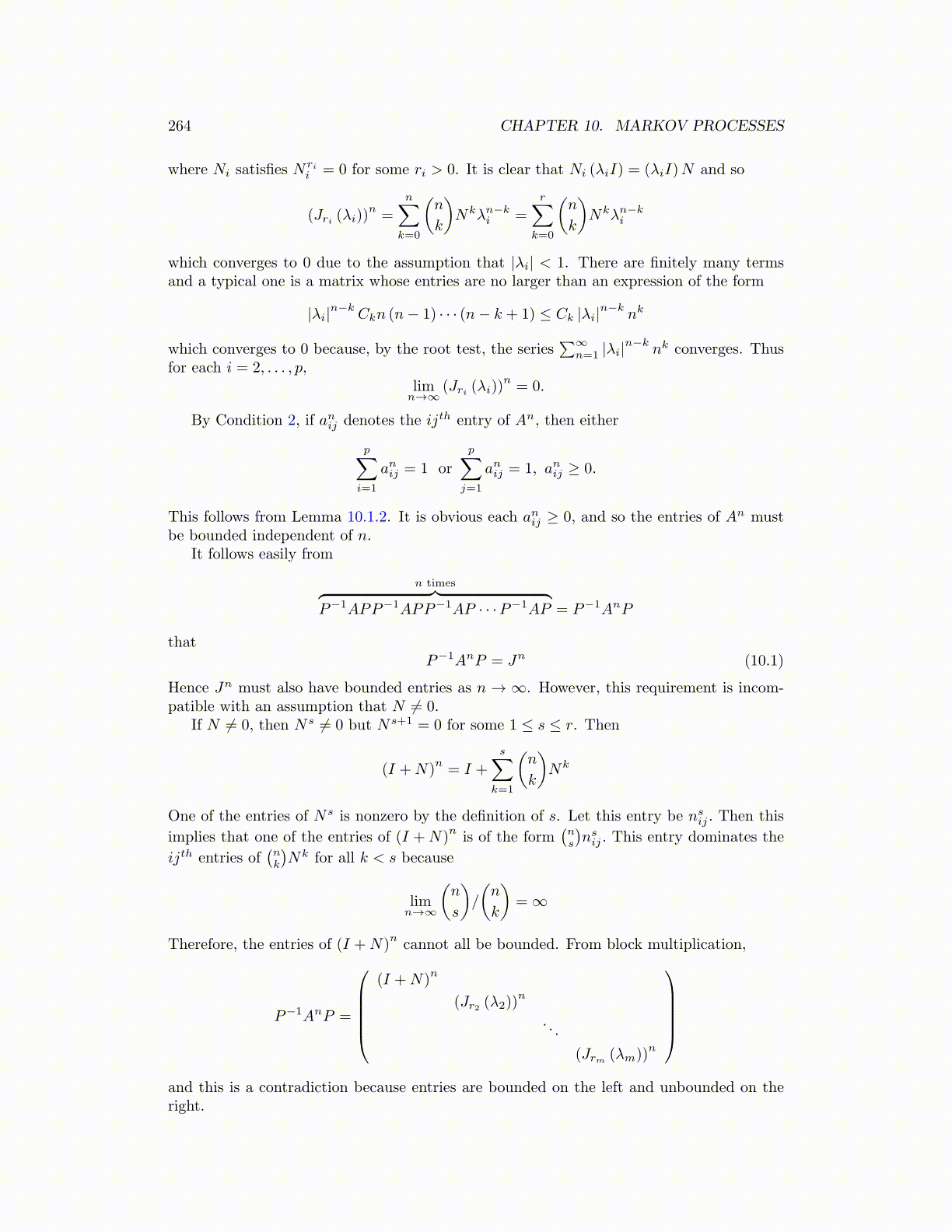
264 CHAPTER 10. MARKOV PROCESSES
where Ni satisfies Nrii = 0 for some ri > 0. It is clear that Ni (λiI) = (λiI)N and so
(Jri (λi))n=
n∑k=0
(n
k
)Nkλn−k
i =
r∑k=0
(n
k
)Nkλn−k
i
which converges to 0 due to the assumption that |λi| < 1. There are finitely many termsand a typical one is a matrix whose entries are no larger than an expression of the form
|λi|n−kCkn (n− 1) · · · (n− k + 1) ≤ Ck |λi|n−k
nk
which converges to 0 because, by the root test, the series∑∞
n=1 |λi|n−k
nk converges. Thusfor each i = 2, . . . , p,
limn→∞
(Jri (λi))n= 0.
By Condition 2, if anij denotes the ijth entry of An, then either
p∑i=1
anij = 1 or
p∑j=1
anij = 1, anij ≥ 0.
This follows from Lemma 10.1.2. It is obvious each anij ≥ 0, and so the entries of An mustbe bounded independent of n.
It follows easily from
n times︷ ︸︸ ︷P−1APP−1APP−1AP · · ·P−1AP = P−1AnP
thatP−1AnP = Jn (10.1)
Hence Jn must also have bounded entries as n → ∞. However, this requirement is incom-patible with an assumption that N ̸= 0.
If N ̸= 0, then Ns ̸= 0 but Ns+1 = 0 for some 1 ≤ s ≤ r. Then
(I +N)n= I +
s∑k=1
(n
k
)Nk
One of the entries of Ns is nonzero by the definition of s. Let this entry be nsij . Then this
implies that one of the entries of (I +N)nis of the form
(ns
)nsij . This entry dominates the
ijth entries of(nk
)Nk for all k < s because
limn→∞
(n
s
)/
(n
k
)= ∞
Therefore, the entries of (I +N)ncannot all be bounded. From block multiplication,
P−1AnP =
(I +N)
n
(Jr2 (λ2))n
. . .
(Jrm (λm))n
and this is a contradiction because entries are bounded on the left and unbounded on theright.